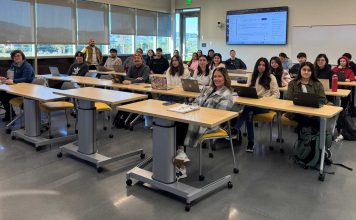Two of the most unknown planets in our solar system are the two
gas giants Uranus and Neptune. While the planets are very large,
they are so far away that it makes both difficult at best to view
from the amateur astronomer’s back yard.
Two of the most unknown planets in our solar system are the two gas giants Uranus and Neptune. While the planets are very large, they are so far away that it makes both difficult at best to view from the amateur astronomer’s back yard. Each has a greenish tint, making them somewhat easier to distinguish from the stars. But each can be viewed with binoculars if one knows where to look.
On the night of March 13, 1781 William Herschel made history when he accidentally stumbled upon a round greenish object in the constellation Gemini. At first he mistakenly thought that he had discovered another comet, for it was moving slowly across the sky not unlike a comet. Upon further analysis, Herschel realized that he had indeed discovered a planet beyond Saturn. The planet later on came to be known as Uranus, who, in mythology, is the Father of Saturn.
Today we know that Uranus is the third largest planet in our solar system, behind Jupiter and Saturn. Uranus measures some 32,000 miles across; our own Earth measures 8,000 miles. Uranus is more than 19 times farther away from the Sun than the Earth. The Sun’s light takes some 8.5 minutes to reach the Earth. At Uranus’s distance, the light from the Sun would take around 2.6 hours to reach the gassy planet.
By the end of the 18th century, astronomers were becoming confused with the orbit of Uranus. It was the only planet that did not obey the planetary rules as we knew them. The astronomers had figured that some object beyond Uranus was causing the unusual path of this planet. And then on the night of Sept. 23, 1846 at the Berlin Observatory, Johann Gottfried Galle discovered Neptune.
What we knew of this new planet was somewhat limited at that time. But things changed in August of 1989 when Voyager 2 flew by Neptune to reveal the unknown. We now know that Neptune’s atmosphere is a colorful turquoise. Voyager’s camera revealed a dark Earth-sized spot similar to the Great Red Spot on Jupiter. Also revealed were thin irregular rings around the planet, a smaller version of Saturn’s, as well as six new moons to add to Triton and Nereid. Neptune is somewhat more than 30,000 miles across in diameter and more than 30 times farther away from the Sun than our own Earth.
Right now you can find Uranus and Neptune in the constellations Aquarius and Capricornus, respectively. So to find them yourself, you can find the actual location of each in any one of the many astronomy magazines, such as “Astronomy” and “Sky and Telescope.” Of course if you have a Go-To equipped telescope, as I have, your scope will take you right to it. It is almost like cheating. Many of the old timers feel if you can’t navigate around the heavens on your own, you are not doing yourself or the craft justice. I must admit that I do enjoy the star-hoping method from time to time; it certainly is more of a challenge. But the main goal here is to find your object. Who really cares how you get there?
I’m sure by now most of you have heard the story going around on the Internet that in September, Mars will be closer to Earth than at anytime in the last 40,000 years and that it will even look bigger than the Moon. Well, I hope by now you all realize that it was all hogwash. It is always hard for someone like me who believes everything he hears and reads to disbelieve anything that is in writing. But this was just too much to swallow. I guess from now on I will have to do a better job of filtering what I read and hear than I have in the past.
At the end of October and early November, Mars will be at its best since the beautiful showing in the autumn 2003. Right now, you can see Mars peeking up on the eastern horizon around 11:30pm. Each night the red planet will rise earlier until the end of this month you won’t have to stay up so late to enjoy it. If you have a four-inch or bigger telescope, try to see if you can pick out the South Polar Cap, and other surface markings. Mars will be even higher in the sky this year than it was in 2003. It may be smaller but you should be able to get sharper and longer views this time.
Though Mars will be at its closest in October and November, don’t feel that you have to hurry and see Mars right away – our neighbor planet will be in good view until the first months of next year. Try taking some pictures of the red planet through your telescope and let me know how you do. As per my experience you will find out that it is not the easiest thing to accomplish. But don’t give up – you just may surprise yourself.
Clear skies.
David Baumgartner is in local real estate and is an avid amateur astronomer. His Sky Watch column appears monthly.












